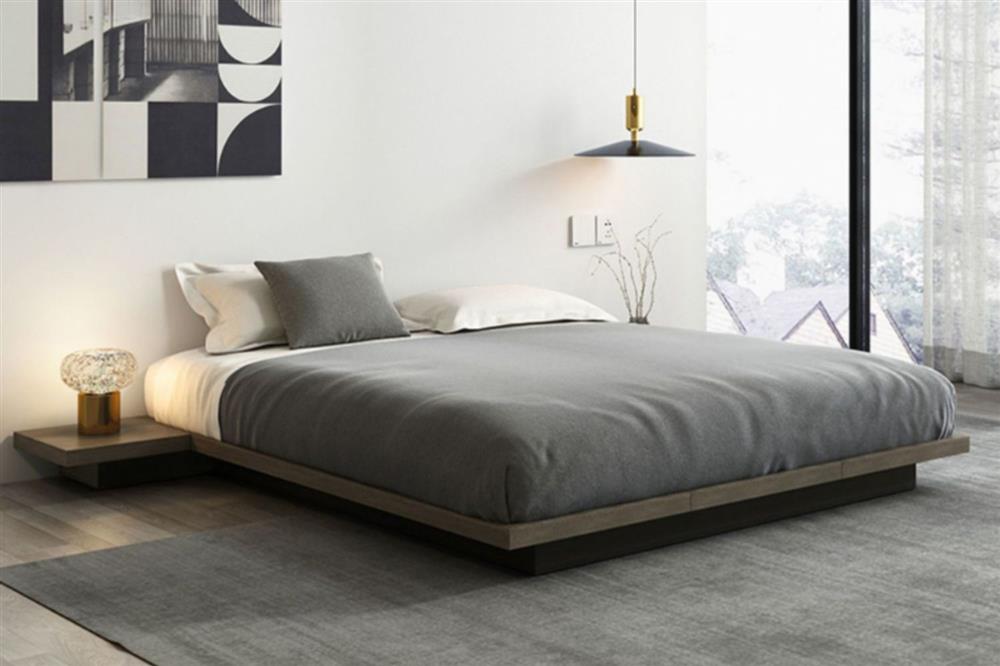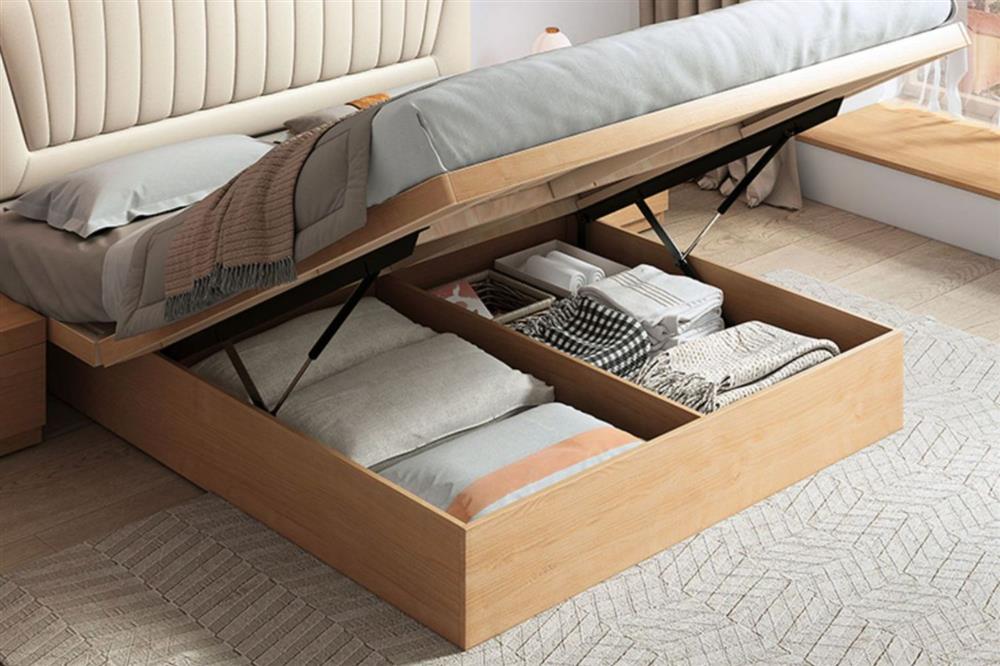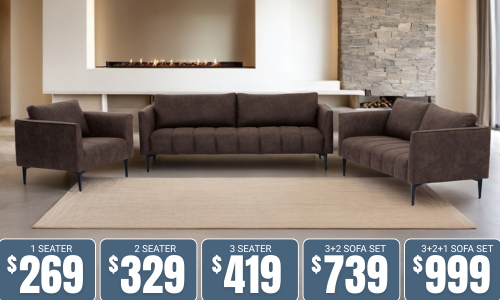 In a world that often appears cluttered and chaotic, the concept of minimalism has gained significant popularity. This trend extends beyond decluttering your living space; it has also found its way into the design of furniture. Minimalism in furniture is all about achieving a harmonious balance between aesthetics and functionality. In this article, we'll explore the essence of minimalism in furniture and how it can transform your living spaces.
In a world that often appears cluttered and chaotic, the concept of minimalism has gained significant popularity. This trend extends beyond decluttering your living space; it has also found its way into the design of furniture. Minimalism in furniture is all about achieving a harmonious balance between aesthetics and functionality. In this article, we'll explore the essence of minimalism in furniture and how it can transform your living spaces.
The Essence of Minimalism
Minimalism is more than just a design trend; it's a philosophy that advocates for simplicity and the elimination of unnecessary elements. It encourages you to focus on what truly matters, both in design and life. When applied to furniture, minimalism seeks to create pieces that are visually pleasing, unobtrusive, and highly functional.
Clean Lines and Simple Forms
At the heart of minimalistic furniture design are clean lines and simple forms. Furniture pieces often feature straight lines, geometric shapes, and a lack of ornate detailing. This simplicity in design allows the furniture to blend seamlessly with various interior styles and spaces.
Neutral Colour Palette
Minimalist furniture tends to favour neutral colour palettes, such as whites, greys, blacks, and earthy tones. These colours create a calming and unobtrusive atmosphere, making the space feel open and inviting. The absence of bold, attention-grabbing colours is a hallmark of minimalist design.
Quality Over Quantity
Minimalism encourages the idea of "less is more." This means that instead of cluttering your space with numerous pieces of furniture, you focus on selecting a few high-quality items that serve their purpose exceptionally well. Quality materials and craftsmanship take precedence over quantity.
Functionality as a Priority
One of the key principles of minimalistic furniture design is prioritising functionality. Minimalist pieces are designed with a purpose and often serve multiple functions. For example, a coffee table might have built-in storage or a sofa that converts into a bed. This approach maximises the utility of each piece while minimising clutter.
Multifunctional Furniture
Multifunctional furniture is a staple of minimalist design. Pieces like sofa beds, extendable dining tables, and storage ottomans are designed to make the most of your space without compromising on style. These pieces adapt to your needs, ensuring that every square inch of your home serves a purpose.
Hidden Storage Solutions
To maintain a clean and uncluttered look, minimalistic furniture often incorporates hidden storage solutions. Cabinets with sleek, push-to-open mechanisms, floating wall-mounted shelves, and beds with under-bed storage drawers are examples of how functionality seamlessly integrates with aesthetics.
Finding the Right Balance
Balancing aesthetics and functionality is the essence of minimalism in furniture design. Here are some tips for achieving this balance in your home:
- Declutter First: Before investing in minimalist furniture, declutter your space. Get rid of items you no longer need or use. This will create a clean canvas on which your new furniture can shine.
- Choose Quality Over Quantity: Invest in well-crafted, durable pieces that will stand the test of time. These pieces may have a higher upfront cost, but they are more sustainable in the long run and contribute to the overall minimalist aesthetic.
- Prioritise Versatility: Select furniture that serves multiple functions or can adapt to changing needs. This not only saves space but also adds practicality to your living areas.
- Maintain a Cohesive Colour Palette: Stick to a neutral colour palette for your furniture and decor. This creates a sense of unity and tranquillity in your home.
- Embrace Negative Space: Allow for plenty of negative space in your design. This means leaving areas of your room empty, which can be just as impactful as the furniture itself.
Minimalism in furniture design is all about achieving a delicate balance between aesthetics and functionality. By adhering to the principles of clean lines, neutral colours, and prioritising quality and functionality, you can create a space that is not only visually appealing but also highly practical. Minimalistic furniture invites you to live with intention, appreciating the beauty of simplicity in your daily life. So, take a step toward a more serene and clutter-free environment by exploring the world of minimalistic furniture design. Your home will thank you for it.
Check out our range to create your own minimalist home!

 Creativity knows no bounds in the world of interior design. The fusion of nature's tranquillity and artistic expression has taken centre stage. The marriage of artificial plants and wall art has opened up a world of possibilities, allowing homeowners to transform their living spaces into personalised sanctuaries of style and serenity. This article delves into the intricate art of decorating with artificial plants and wall art, exploring how this dynamic duo can elevate your space to new heights.
Creativity knows no bounds in the world of interior design. The fusion of nature's tranquillity and artistic expression has taken centre stage. The marriage of artificial plants and wall art has opened up a world of possibilities, allowing homeowners to transform their living spaces into personalised sanctuaries of style and serenity. This article delves into the intricate art of decorating with artificial plants and wall art, exploring how this dynamic duo can elevate your space to new heights. In the hustle and bustle of modern life, finding moments of tranquility and peace is essential for our well-being. A Zen-inspired space at home can serve as a sanctuary, providing a calm and serene retreat from the outside world. One of the key elements in designing such a space is minimalist furniture. With its focus on simplicity, clean lines, and uncluttered aesthetics, minimalist furniture plays a pivotal role in creating a Zen ambiance. In this article, we will explore the principles of minimalist furniture and discover how it can transform your home into a haven of tranquility.
In the hustle and bustle of modern life, finding moments of tranquility and peace is essential for our well-being. A Zen-inspired space at home can serve as a sanctuary, providing a calm and serene retreat from the outside world. One of the key elements in designing such a space is minimalist furniture. With its focus on simplicity, clean lines, and uncluttered aesthetics, minimalist furniture plays a pivotal role in creating a Zen ambiance. In this article, we will explore the principles of minimalist furniture and discover how it can transform your home into a haven of tranquility.


.jpg)



.jpg)



.webp)

 (3).jpeg)
